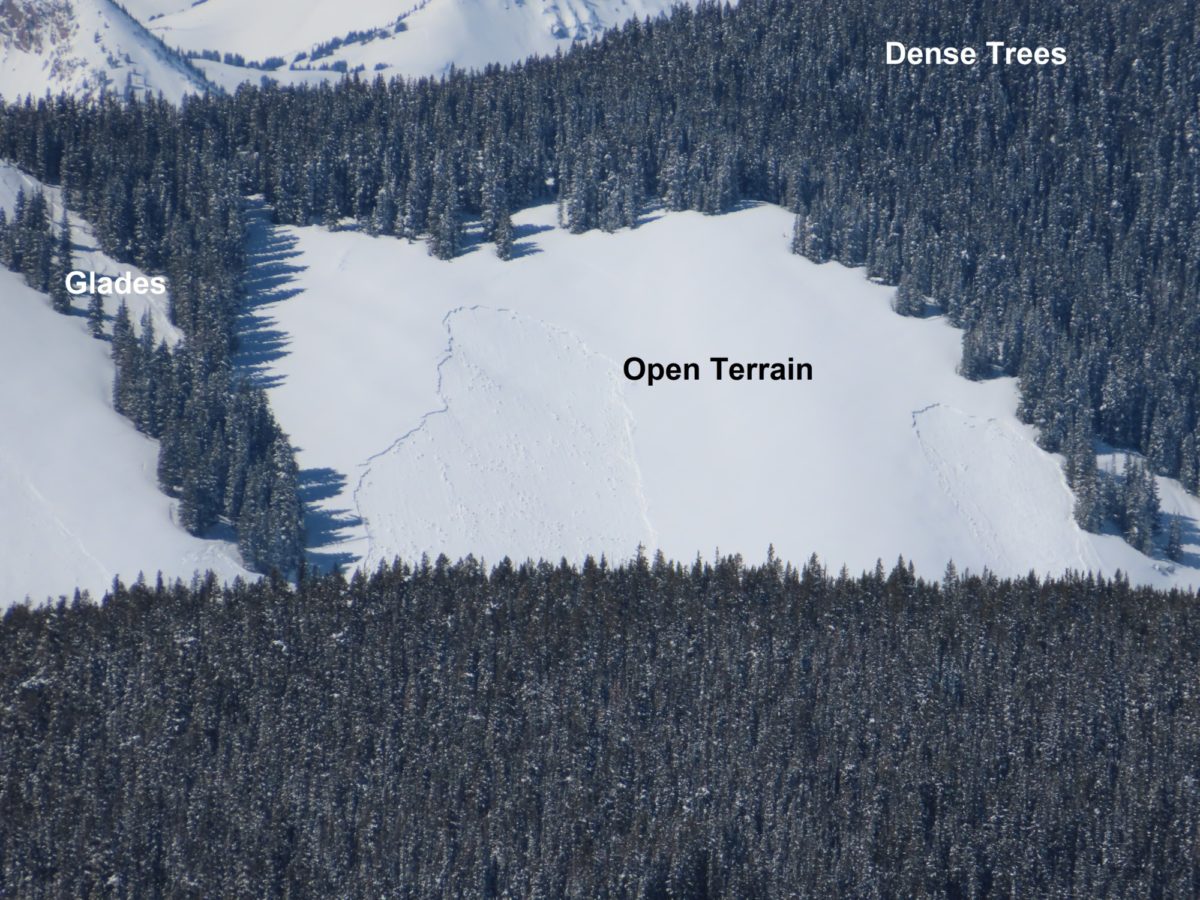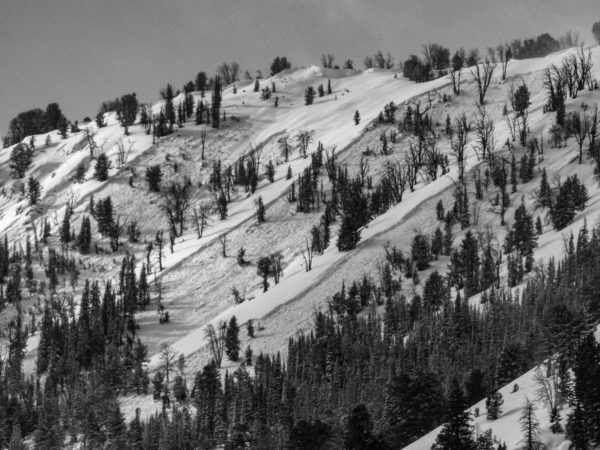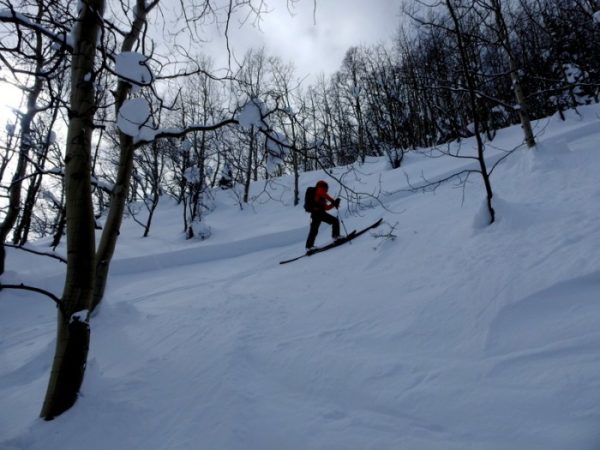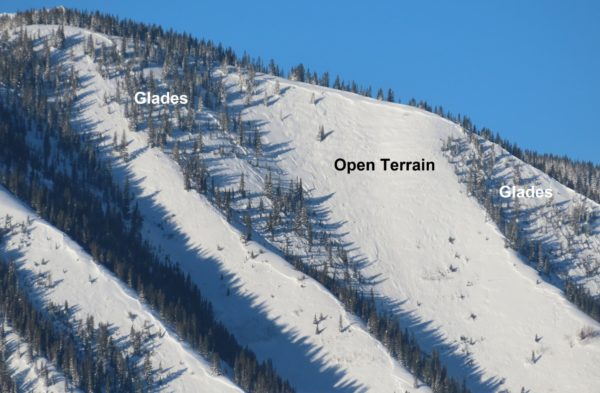The spacing of trees on a slope.
Tree density influences the potential release areas of avalanches, as well as the flow characteristics of avalanches in motion. Dense tree cover limits avalanches because trees anchor the snowpack and disrupt the continuity of layers, whereas avalanches are much more common in gladed and open terrain. The stabilizing effect of trees depends on the density of stems, the canopy type, and the tree height. Evergreen trees with broad canopies or branches that reach into the snowpack, such as old-growth forests, fir, or spruce, disrupt the continuity of the snowpack better than deciduous trees or some types of pine trees. As the season progresses, the anchoring benefits from small trees diminish because more of their branches get buried. As a rough rule of thumb, if you can easily link turns together through trees, there is potential for at least a small avalanche.
Dense tree cover is defined as trees that are spaced out less than 10 feet apart or more than 1000 stems per hectare. Gladed terrain has tree spacing ranging from 10 to 33 feet on average, with 100 to 1000 stems per hectare. Trees are spaced out greater than 33 feet on average in open terrain, with less than 100 stems per hectare.

Even in dense tree cover, small openings can produce avalanches. These tend to be smaller and shallower than avalanches on more open slopes. Credit: Northwest Avalanche Center



